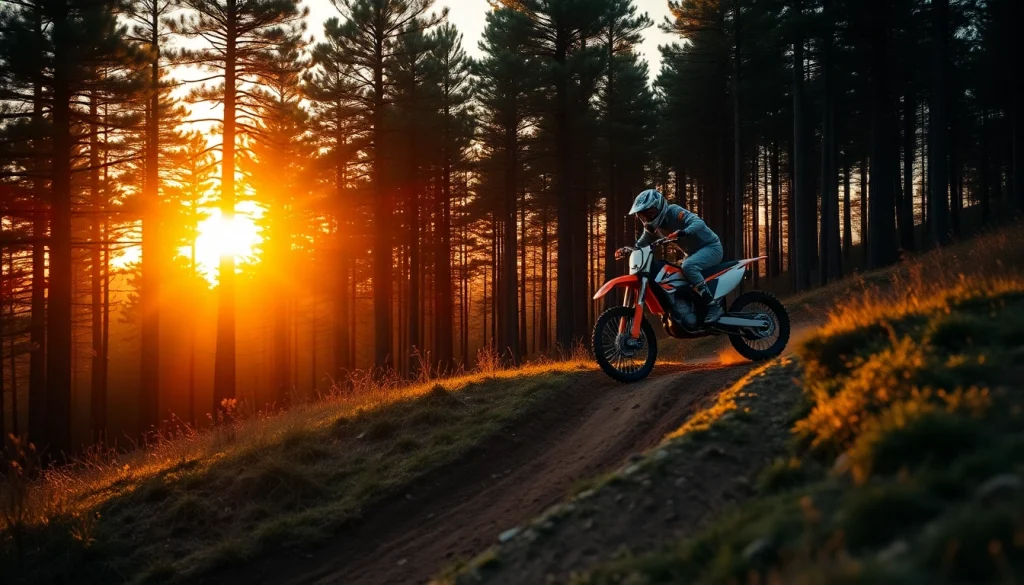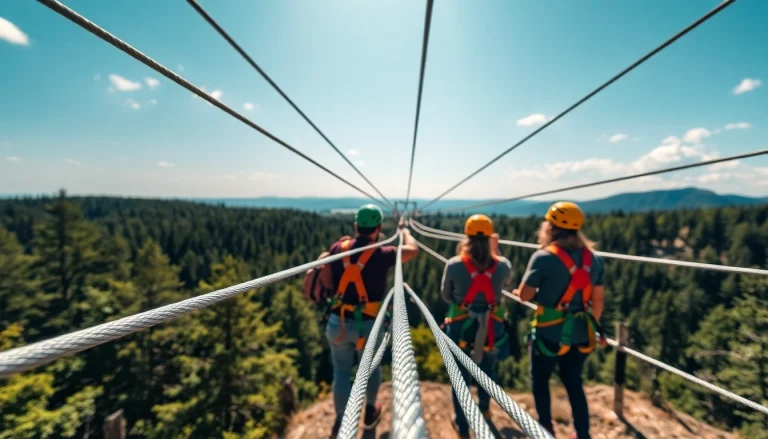
The Thrill of Motocross Trails
Motocross has captivated enthusiasts for decades, blending speed, skill, and the allure of the great outdoors. Whether you’re a seasoned rider or a curious beginner, the excitement found along the motocross trail is a unique blend of adrenaline and nature that few activities can match. This article explores the intricacies of motocross trails, from their historical origins to the variety of trails available, providing a comprehensive guide to elevate your riding experience.
What is a motocross trail?
A motocross trail is a designated path designed for off-road motorcycle riding, typically marked by varied terrain conditions, jumps, and obstacles that challenge riders’ skills and techniques. Unlike motocross tracks, which are closed circuits, motocross trails weave through natural landscapes, offering a dynamic riding experience. Trails can range from beginner-friendly paths to advanced routes featuring steep climbs, sharp turns, and technical sections that require developed skills and confidence.
History and evolution of motocross trails
The roots of motocross can be traced back to the early 20th century, originating in the UK as motorcycle trials, where riders navigated challenging terrains. Over time, this sport evolved into motocross racing, with dedicated tracks emerging. However, the enthusiasts seeking adventure off the beaten path initiated the concept of motocross trails, allowing riders to explore the outdoors while still engaging in their passion for speed. Today, motocross trails are maintained and curated across various regions, accommodating a wide range of riding styles and skill levels.
Understanding different types of motocross trails
Motocross trails can be broadly categorized into several types based on their features and intended riding experience:
- Single Track Trails: Typically narrow paths that wind through forests, hilly areas, or rugged terrains. These trails challenge riders by requiring careful maneuvering and precision.
- Double Track Trails: Wider than single tracks, these allow for easier navigation and can accommodate two-way traffic. They often feature more moderate obstacles, making them suitable for beginners.
- Extreme Trails: Designed for experienced riders, these trails feature significant elevation changes, rocky sections, and steep inclines, demanding advanced skills and high-performance bikes.
- Enduro Trails: Combining elements of trail riding with timed sections, enduro trails are designed for both speed and technical riding. Riders must navigate obstacles while racing against the clock.
Selecting the Right Motocross Trail
Factors to consider before choosing a motocross trail
When selecting a motocross trail, it’s essential to evaluate several factors to ensure both safety and enjoyment:
- Skill Level: Assess your own riding capabilities and experience. Beginners should seek out easier trails to build their skills, while more seasoned riders may crave challenging routes.
- Trail Conditions: Check recent weather and trail conditions. Wet or muddy trails can be perilous, while dry conditions may enhance performance.
- Length and Duration: Consider how long the trail is and how much time you can dedicate to your ride. Some trails may take hours to complete, while others are shorter and more casual.
- Regulations: Research local regulations regarding trail usage, including required permits, hours of operation, and rules specific to off-road vehicles.
Safety gear essentials for motocross trail riding
Ensuring safety while riding on motocross trails cannot be overstated. Here are essential gear items every rider should wear:
- Helmet: A DOT-approved helmet designed for motocross is vital to protect your head from impacts.
- Goggles: Protect your eyes from mud, dust, and debris while enhancing visibility during rides.
- Gloves: Offering grip and control, gloves also protect your hands from abrasions and cold weather.
- Chest Protector: Mitigating risks to your torso, a chest protector is advisable for both beginners and advanced riders alike.
- Boots: Sturdy, high-top boots protect your feet and ankles from injuries associated with falls.
- Knee and Elbow Guards: These guards protect vulnerable joints from the falls or impacts that associate with intense riding.
Best practices for trail maintenance and respect
Trail stewardship is crucial for sustainability and enjoyment of motocross trails. Here are best practices to follow:
- Stay on Designated Trails: Riding off the trail can damage the ecosystem and lead to erosion.
- Clean Up After Yourself: Carry out trash, including any items you may have brought along during your ride.
- Report Trail Conditions: Inform local authorities or trail maintenance crews about obstacles or hazards you encounter.
- Share the Trail: Be courteous to other trail users, including hikers and cyclists. Use defensive riding techniques to avoid collisions.
Techniques for Riding on Motocross Trails
Fundamental riding techniques for beginners
Starting it off right is essential for new riders. Here are fundamental techniques to help beginners:
- Body Position: Maintain an agile and relaxed stance, centering your body weight over the bike to facilitate better control.
- Throttle Control: Practice smooth throttle application to manage speed and maintain traction during turns and obstacles.
- Braking Techniques: Use both front and rear brakes effectively to slow down without losing control. Learning to modulate brake pressure is key.
- Looking Ahead: Always keep your eyes focused on where you want to go, which helps in making quicker decisions regarding turns and obstacles.
Advanced skills for tackling challenging motocross trails
As riders gain confidence, they will want to develop advanced techniques for handling tough trails:
- Jumping: Start small, practicing on gentle inclines before progressing to larger jumps. Keep your body loose and maintain a centered balance while in the air.
- Cornering: Master the art of cornering through lean angles and throttle control while transitioning smoothly into straights.
- Climbing: Use your body weight effectively to maintain traction while approaching steep climbs, shifting weight forward as needed.
- Descending: Control speed by using engine braking while shifting weight back for stability on descents.
Mental preparation for motocross trail riding
Mental readiness plays a vital role in motocross trail riding. These strategies can enhance focus and performance:
- Visualization: Before hitting the trail, visualize your ride, including tricky sections and jumps, to mentally prepare for challenges.
- Goal Setting: Define clear goals for each ride, be it improving specific skills or completing a particular trail without mishaps.
- Staying Calm: Maintain a calm demeanor even when faced with unexpected obstacles. Practicing breathing techniques can assist with managing anxiety.
Popular Motocross Trails in the United States
Top-rated motocross trails you must try
For those ready to hit the trails, here are some of the top-rated motocross trails worth exploring:
- Rainbow Falls OHV Area: Ideal for beginners, offering a variety of trails with scenic views and diverse terrain.
- Taylor Park: An impressive trail system that caters to all skill levels with breathtaking mountain scenery.
- Rampart Range: Provides a challenging range of trails through rugged wilderness, perfect for advanced riders.
- Grand Valley OHV Area: Offers expansive trails that can accommodate both single and double track experiences.
Regional variations in motocross trail experiences
Trails throughout the United States offer diverse riding experiences influenced by regional geography and climate. Areas in the West often have mountainous terrains that provide natural obstacles, while Southern trails may, at times, feature sandy soils and flatlands. The Eastern regions commonly present lush, wooded environments with technical single-track trails. Understanding these regional variations allows riders to choose trails that match their expectations for adventure and challenge.
Maps and resources for navigating motocross trails
Having the right resources can significantly enhance your motocross trail riding experience. Some valuable tools include:
- Trail Maps: Local park websites often provide detailed maps of motocross trails, including specific routes and challenges.
- Mobile Applications: Several apps offer navigation, trail ratings, and user-reviewed experiences, helping riders find new terrains.
- Community Forums: Engaging in motorcycle riding forums can provide insights from fellow riders about their favorite trails and experiences.
Community and Events Surrounding Motocross Trails
Joining motocross trail communities and clubs
Becoming part of a motocross community can significantly enhance your riding journey. Local clubs often organize group rides, maintenance days, and skill workshops, allowing enthusiasts to learn from each other. Engaging with fellow riders not only fosters friendship but also builds a reliable support network that shares valuable insights and promotes safe riding practices.
Annual motocross events to attend
Attending motocross events offers opportunities to connect with other riders, witness competitions, and even participate in workshops. Many regions host annual motocross meets, featuring competitions among seasoned riders. These events often include classes for different skill levels, family-friendly activities, and vendor displays showcasing the latest in motocross gear.
Sharing your motocross trail experiences online
Documenting and sharing your motocross trail adventures on social media platforms or personal blogs can enhance the community’s enjoyment of the sport. Engaging content can inspire new riders and create a dialogue around best practices and trail safety. Be sure to use storytelling techniques to convey not just the adrenaline of each ride but also the deep connection between riders and nature, highlighting the importance of preserving these trails for future generations.






